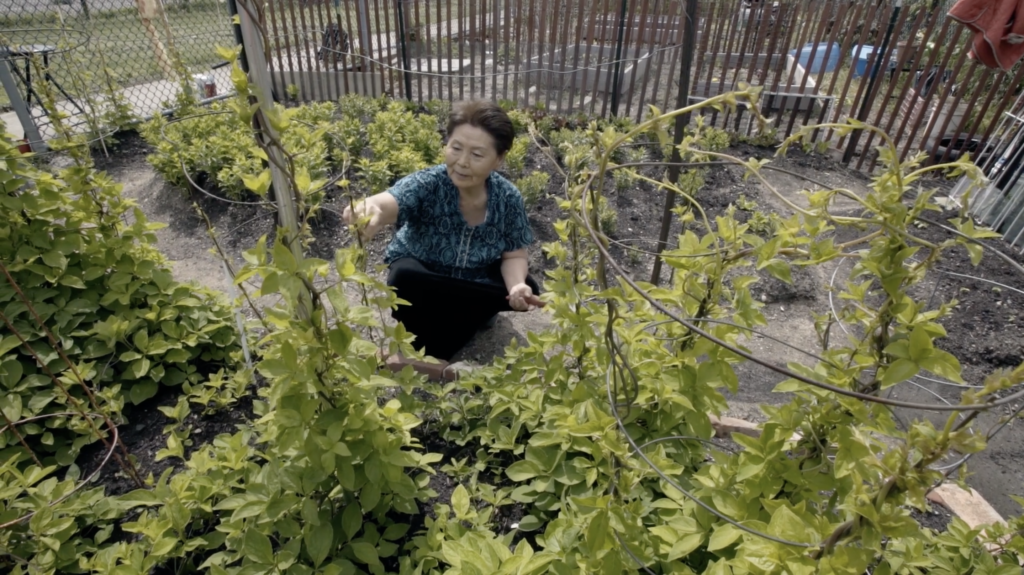We recently launched our latest short film on the community garden project in Queens that is part of our National Nature Sacred Awards program. Below, a letter from the filmmaker Alden Stoner, which also appeared in The Dirt, the American Society of Landscape Architects blog.
Rarely have I worked on a project that I feel is quite as timely and potentially impactful as this film on the Beach 41st Street garden. With images of Texas, Florida and the Caribbean fresh in our minds, this story of how nature has helped one Queens community heal following Hurricane Sandy is incredibly relevant.
When we finished shooting this past spring, it was months before the name Harvey had been uttered on a weather forecast. But by the time September had arrived, and with it a new wave of destructive storms, we at TKF felt a renewed sense of urgency to shine a light on what we had learned through our work in Queens post-Sandy.
When Sandy’s storm surge engulfed the Rockaways, the devastation was intense. You get a visceral sense of what the residents of Beach 41st Street, a New York City Housing residence, lived through in the voice of Celeste Grimes, one of the resident gardeners we interviewed for the film. She described it in apocalyptic terms.
In 2014, TKF chose the Beach 41 Street garden as a site to receive one of only six grants awarded to clusters of cross-disciplinary research teams to study how healing green spaces help individuals and communities recover following various kinds of trauma.
The team that applied for funding on behalf of the Beach 41 Street project included social scientists Lindsay Campbell and Erika Svendsen of the US Forest Service; Keith Tidball, Director of the Cornell Cooperative Extension Disaster Education Network at Cornell University, Craig Desmond of Ecotone Building, and Landscape Architect Victoria Marshall. The team collaborated on a plan that would enable residents to revive the gardens and space; a healing exercise intended to meet what researchers understand is a desire innate in people to connect with nature, particularly in times of deep distress and trauma caused by nature.
For years now, social scientists, civic ecologists, horticultural therapists — among others — have been gathering evidence of the innate connection between people and nature, terming it biophilia. Expanding on that concept, Keith Tidball originated the term “urgent biophilia” to describe the intense need that arises post-disaster to connect with nature.
What the research team saw happening at the Beach 41st Street garden — between the gardeners and community and green space — was a living enactment of urgent biophilia. As they worked to restore the gardens, they were at the same time restoring themselves.
What we often miss in the media is the full scope of the damage that remains in the aftermath of the immediate aftermath of a storm. We know that recovery extends far beyond reconstruction and restoration. But if our communities are to heal fully following natural disasters like Sandy, Harvey, Irma, Maria — and the countless future storms that are sure to arise in the coming weeks, months and years, we can’t ignore our green infrastructures. They are, without a doubt, essential to our wellbeing.

